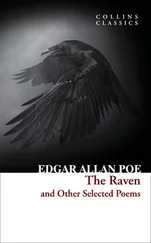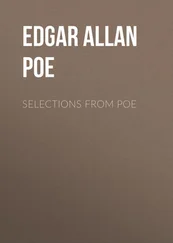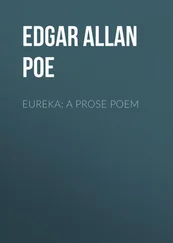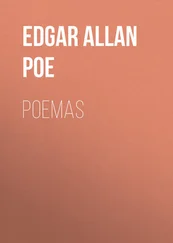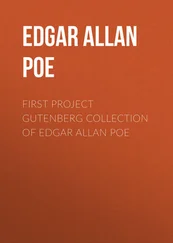“I know not,” continued Dupin, “what impression I may have made, so far, upon your own understanding; but I do not hesitate to say that legitimate deductions even from this portion of the testimony—the portion respecting the gruff and shrill voices—are in themselves sufficient to engender a suspicion which should give direction to all farther progress in the investigation of the mystery. I said ‘legitimate deductions’; but my meaning is not thus fully expressed. I designed to imply that the deductions are the sole proper ones, and that the suspicion arises inevitably from them as the single result. What the suspicion is, however, I will not say just yet. I merely wish you to bear in mind that, with myself, it was sufficiently forcible to give a definite form—a certain tendency—to my inquiries in the chamber.
“Let us now transport ourselves, in fancy, to this chamber. What shall we first seek here? The means of egress employed by the murderers. It is not too much to say that neither of us believe in præternatural events. Madame and Mademoiselle L’Espanaye were not destroyed by spirits. The doers of the deed were material, and escaped materially. Then how? Fortunately, there is but one mode of reasoning upon the point, and that mode must lead us to a definite decision. Let us examine, each by each, the possible means of egress. It is clear that the assassins were in the room where Mademoiselle L’Espanaye was found, or at least in the room adjoining, when the party ascended the stairs. It is then only from these two apartments that we have to seek issues. The police have laid bare the floors, the ceilings, and the masonry of the walls, in every direction. No secret issues could have escaped their vigilance. But, not trusting to their eyes, I examined with my own. There were, then, no secret issues. Both doors leading from the rooms into the passage were securely locked, with the keys inside. Let us turn to the chimneys. These, although of ordinary width for some eight or ten feet above the hearths, will not admit, throughout their extent, the body of a large cat. The impossibility of egress, by means already stated, being thus absolute, we are reduced to the windows. Through those of the front room no one could have escaped without notice from the crowd in the street. The murderers must have passed, then, through those of the back room. Now, brought to this conclusion in so unequivocal a manner as we are, it is not our part, as reasoners, to reject it on account of apparent impossibilities. It is only left for us to prove that these apparent ‘impossibilities’ are, in reality, not such.
“There are two windows in the chamber. One of them is unobstructed by furniture, and is wholly visible. The lower portion of the other is hidden from view by the head of the unwieldy bedstead which is thrust close up against it. The former was found securely fastened from within. It resisted the utmost force of those who endeavored to raise it. A large gimlet-hole had been pierced in its frame to the left, and a very stout nail was found fitted therein, nearly to the head. Upon examining the other window, a similar nail was seen similarly fitted in it; and a vigorous attempt to raise this sash, failed also. The police were now entirely satisfied that egress had not been in these directions. And, therefore , it was thought a matter of supererogation to withdraw the nails and open the windows.
“My own examination was somewhat more particular, and was so for the reason I have just given—because here it was, I knew, that all apparent impossibilities must be proved to be not such in reality.
“I proceeded to think thus— a posteriori . The murderers did escape from one of these windows. This being so, they could not have refastened the sashes from the inside, as they were found fastened;—the consideration which put a stop, through its obviousness, to the scrutiny of the police in this quarter. Yet the sashes were fastened. They must , then, have the power of fastening themselves. There was no escape from this conclusion. I stepped to the unobstructed casement, withdrew the nail with some difficulty, and attempted to raise the sash. It resisted all my efforts, as I had anticipated. A concealed spring must, I now knew, exist; and this corroboration of my idea convinced me that my premises, at least, were correct, however mysterious still appeared the circumstances attending the nails. A careful search soon brought to light the hidden spring. I pressed it, and, satisfied with the discovery, forbore to upraise the sash.
“I now replaced the nail and regarded it attentively. A person passing out through this window might have reclosed it, and the spring would have caught—but the nail could not have been replaced. The conclusion was plain, and again narrowed in the field of my investigations. The assassins must have escaped through the other window. Supposing, then, the springs upon each sash to be the same, as was probable, there must be found a difference between the nails, or at least between the modes of their fixture. Getting upon the sacking of the bedstead, I looked over the head-board minutely at the second casement. Passing my hand down behind the board, I readily discovered and pressed the spring, which was, as I had supposed, identical in character with its neighbor. I now looked at the nail. It was as stout as the other, and apparently fitted in the same manner—driven in nearly up to the head.
“You will say that I was puzzled; but, if you think so, you must have misunderstood the nature of the inductions. To use a sporting phrase, I had not been once ‘at fault.’ The scent had never for an instant been lost. There was no flaw in any link of the chain. I had traced the secret to its ultimate result,—and that result was the nail . It had, I say, in every respect, the appearance of its fellow in the other window; but this fact was an absolute nullity (conclusive as it might seem to be) when compared with the consideration that here, at this point, terminated the clew. ‘There must be something wrong,’ I said, ‘about the nail.’ I touched it; and the head, with about a quarter of an inch of the shank, came off in my fingers. The rest of the shank was in the gimlet-hole where it had been broken off. The fracture was an old one (for its edges were incrusted with rust), and had apparently been accomplished by the blow of a hammer, which had partially imbedded, in the top of the bottom sash, the head portion of the nail. I now carefully replaced this head portion in the indentation whence I had taken it, and the resemblance to a perfect nail was complete—the fissure was invisible. Pressing the spring, I gently raised the sash for a few inches; the head went up with it, remaining firm in its bed. I closed the window, and the semblance of the whole nail was again perfect.
“The riddle, so far, was now unriddled. The assassin had escaped through the window which looked upon the bed. Dropping of its own accord upon his exit (or perhaps purposely closed), it had become fastened by the spring; and it was the retention of this spring which had been mistaken by the police for that of the nail,—farther inquiry being thus considered unnecessary.
“The next question is that of the mode of descent. Upon this point I had been satisfied in my walk with you around the building. About five feet and a half from the casement in question there runs a lightning-rod. From this rod it would have been impossible for any one to reach the window itself, to say nothing of entering it. I observed, however, that the shutters of the fourth story were of the peculiar kind called by Parisian carpenters ferrades —a kind rarely employed at the present day, but frequently seen upon very old mansions at Lyons and Bourdeaux. They are in the form of an ordinary door (a single, not a folding door), except that the lower half is latticed or worked in open trellis—thus affording an excellent hold for hands. In the present instance these shutters are fully three feet and a half broad. When we saw them from the rear of the house, they were both about half open—that is to say, they stood off at right angles from the wall. It is probable that the police, as well as myself, examined the back of the tenement; but, if so, in looking at these ferrades in the line of their breadth (as they must have done), they did not perceive this great breadth itself, or, at all events, failed to take it into due consideration. In fact, having once satisfied themselves that no egress could have been made in this quarter, they would naturally bestow here a very cursory examination. It was clear to me, however, that the shutter belonging to the window at the head of the bed, would, if swung fully back to the wall, reach to within two feet of the lightning-rod. It was also evident that, by exertion of a very unusual degree of activity and courage, an entrance into the window, from the rod, might have been thus effected. By reaching to the distance of two feet and a half (we now suppose the shutter open to its whole extent) a robber might have taken a firm grasp upon the trellis-work. Letting go, then, his hold upon the rod, placing his feet securely against the wall, and springing boldly from it, he might have swung the shutter so as to close it, and, if we imagine the window open at the time, might even have swung himself into the room.
Читать дальше



